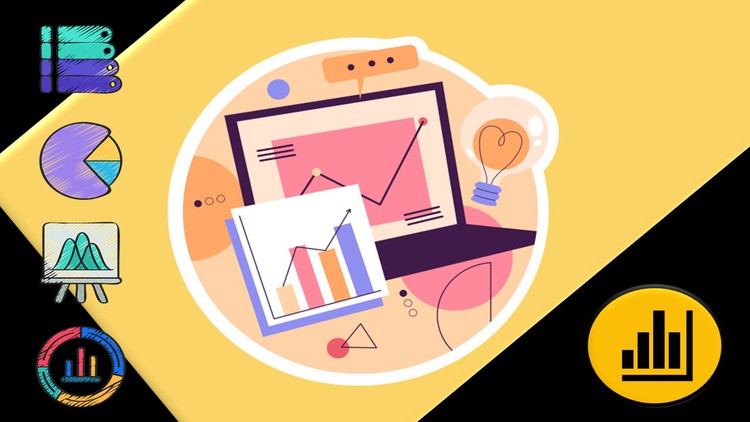
Power Bi Dashboards – Build data models & interactive dashboards using DAX formulas, charts & power query in Power Bi
What you will learn
How to work with Power BI DAX Functions (DAX Measures)
How to work with Power BI Power Query Editor (M Language or M Query Language)
How to work with Power BI Visuals like Charts, Tables and Graphs
How to combine DAX Functions, Power Query and Visuals to create an impressive multipage dashboard
How to get meaningful insights from any raw data using Power BI
How to analyze Trends and Patterns from any raw data using Power BI
How to create Interactive Dashboards in Power BI
Description
Learn Microsoft Power Bi Data Analysis & Data Visualization – Learn Business Intelligence
This course will provide you the skillset you need to create Dynamic Reports and Interactive Dashboards to analyze and interpret meaningful insights from your any data using a Business Intelligence tool like Microsoft Power BI. We have created content with relevance to real world scenarios
From this course, you will learn how to analyze data based on relevance using Power BI.
Power BI is a business analytics and business intelligence service by Microsoft. It aims to provide interactive visualizations and business intelligence capabilities with an interface simple enough for end users to create their own reports and dashboards. Power BI is part of the Microsoft Power Platform.
Power BI is a collection of software services, apps, and connectors that work together to turn your data from different sources into visually immersive and insightful reports.
Using Power BI Desktop, you can create rich, interactive reports with visual analytics at your fingertips for free. It can connect to more than 65 on-premises and cloud data sources to turn information into interactive visuals. Data scientists and developers work with Power BI Desktop to produce reports and make them available to the Power BI service.
In Power BI Desktop, users can:
- Connect to raw data from different sources
- Extract, Profile, Clean, Transform and model the data. Build a Relational Data Model using Power Query and DAX
- Build and optimize data models and DAX measures
- Create charts and graphs using different visualization techniques
- Design and create reports and interactive dashboards to get meaningful insights
- Analyze hidden trends and patterns
- Create and manage datasets
- Share reports with others using the Power BI service within or outside the organization
In this course,
You will learn data analysis and data visualization using Power Query, M Language, Dax and Visualizations in Power BI. You will learn about Power BI Desktop and its components. Learn how to use the Power Query Editor to connect Power BI to various data sources, learn how to work on the Data Models to get meaningful insights.
Topics you will Learn
- Power Bi DAX
- Power Query
- Power Bi Charts and Graphs
- Build a multi page Supplier Quality Analysis Dashboard in Power Bi
You will learn Power BI in a Step by Step Process
Learn how to use Power BI Desktop and Power BI Query Editor
- Learn how to create relationships between related data sources in Power BI
- Learn to create Power BI Data Models using the Power Query, M Language and DAX Formula language to create powerful calculations
- Learn Power BI DAX and how to use it to build custom Measures
- Learn to create Power BI reports with various types of aggregations and filters
- Learn to create Powerful Interactive reports and dashboards with drill throughs and relative date filters in Microsoft Power BI
- Create a wide range of Power BI Charts, Graphs and Visualizations using drag and drop methods from Data Visualization Tools
- Learn how to use themes and custom visualizations in enhance your reports
By the time you complete this course, you’ll be a highly proficient Power BI user.
So what are you waiting for?
Let’s get started.
Content